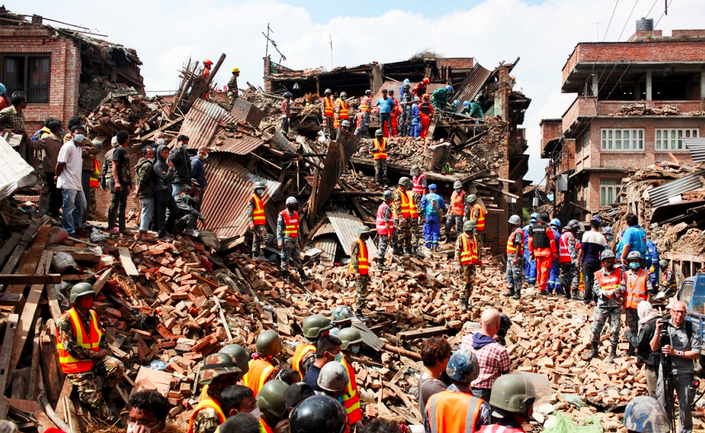With devastating earthquakes and aftershocks lasting for days, the country of Nepal was hit with more than just a natural disaster; it was hit with a logistical nightmare. An airport that was damaged and is the only international airport for the entire country, thousands of people without food or water, intermittent electricity and communications, and so much more, make getting shelter and help to people a cumbersome process.
Many people are asking themselves what they can do to help, but that altruistic thought is quickly followed by doubt – how do you know where your donations go?
The number one way to make sure your donations get to the disaster area is to partner with an organization that already has trained relief workers on the ground. You can go with a large, vetted organization like any of the one’s published by PRI this last week, or you can work with smaller organizations that are permanently set-up in country. They can often do a lot with less bureaucratic hold-ups, but you should be familiar with them and their work before you give. For example, Tiny Hands International has children’s homes throughout the country and has been on the ground since 2004. They are able to get your donations into long-term relief plans – the kind that last after the big organizations jet off to the next catastrophe – because they have an ongoing presence and already established relationships and disaster plans.
In the wake of this, start-ups and innovators hold some of the power to help. Something as simple as a Google Doc can mean the difference between the slow distribution of incoming help and an efficient system that gets people where and what they need as they process loss, grief, and trauma.
Saurav Shretha, from Kathmandu and currently living in Virginia, launched such a project where a simple form helps people communicate where they are, what they have access to and what they need. Individuals, families and international aid organizations turn submissions into a map of campgrounds and resource information that can be used.
Portal Bikes started using their own, custom cargo bikes to bring blankets, water and supplies to people in the campgrounds around their area and into the villages where aid will be most delayed. Their employees began helping with medical needs and digging through buildings with other people looking for loved ones. Because of their innovated transportation, they have been able to get to villages where international aid hasn’t been able to reach and bring much needed survival supplies while large-scale efforts get underway.
Purnaa, an eco-friendly fashion start-up also in Kathmandu, started using their resources and time to set-up campgrounds and help people find their missing loved ones and reconnect with family and friends. They have a network of employees, families and connections that can be utilized to reach the people and areas that might be out-of-reach for incoming and temporary relief work.
Why is it that social impact start-ups and innovators are some of the first to provide real, practical, community-level help in a devastating situation? I believe part of it is the mentality of resourcefulness, flexibility and empathy that drives them to start their projects in the first place. Entrepreneurs are on the ground, noticing what is needed, and doing their best to provide what they can and connect people to make a stronger relief effort as are the organizations that can get massive donations and supplies into the area. Donating to a trusted non-profit or start-up, large or small, means help has a chance to reach those that need it.
Share the grassroots efforts you see happening with us at @StarterNoise using the hashtag #GrassrootsAid


